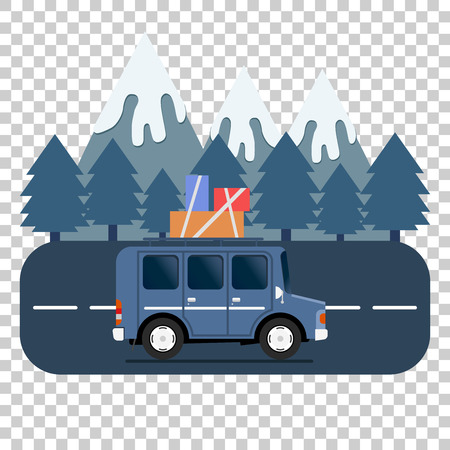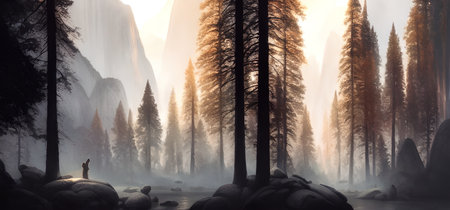Understanding Leave No Trace Principle 4
When we venture into the awe-inspiring landscapes of U.S. National Parks—whether gazing across the sunlit granite faces of Yosemite or wandering under the towering pines of Yellowstone—we become part of a living story that spans generations. Protecting these wild spaces is more than just a responsibility; it’s an invitation to preserve their pristine beauty for those who come after us. This is where Leave No Trace Principle 4, “Minimize Campfire Impacts,” comes into play. Campfires have long been a symbol of outdoor adventure and camaraderie, but they can leave lasting scars on fragile park environments if not managed thoughtfully. By understanding and embracing this principle, visitors help maintain the natural character and health of the parks—ensuring that future hikers, campers, and dreamers experience the same breathtaking scenery and unspoiled wilderness that first inspired America’s love for the outdoors.
2. Campfires and Their Environmental Impact
When you gaze into the glow of a campfire under a sky brushed with mountain silhouettes, it’s easy to forget how something so iconic can leave deep marks on America’s treasured national parks. While fires are woven into the fabric of outdoor traditions, their visual and ecological effects ripple across landscapes, wildlife, and everyone’s park experience.
Visual Footprints on Pristine Landscapes
Each campfire leaves behind more than memories: blackened fire rings, scorched earth, and scarred rocks disrupt the untouched beauty that draws millions to these wild places. Over time, repeated fires in the same spots transform lush meadows or forest floors into barren patches, stripping away the sense of wilderness and solitude that define our national parks.
| Campfire Trace | Visual Impact | Lasting Duration |
|---|---|---|
| Charred fire rings | Disrupts natural scenery | Months to years |
| Scorched ground | Bare patches in grasslands/forests | Years to decades |
| Burned rocks/logs | Permanent color changes, unnatural features | Indefinite |
Ecological Effects on Wildlife and Habitats
The impact runs deeper than what meets the eye. Heat from fires destroys microorganisms vital for soil health, while leftover food scraps attract wildlife, leading animals to become dependent on human food—often with fatal consequences. The smoke and residue alter air and water quality, affecting everything from amphibians in alpine streams to nesting birds high in the pines.
Common Ecological Consequences:
- Soil Sterilization: Loss of nutrients critical for native plants.
- Wildlife Attraction: Increased risk of bear encounters and habituation.
- Erosion: Removal of plant cover leads to runoff and trail degradation.
- Air Quality: Smoke impacts sensitive lungs—both animal and human.
The Ripple Effect on Park Experience
The sight—and smell—of old campfires can break the spell of wilderness immersion for future visitors. Instead of feeling like explorers in a vast wild landscape, campers are reminded of those who came before, shifting the park’s aura from untouched wonder to overused campground. Adhering to Leave No Trace Principle 4 protects not just the land and its creatures but also preserves the magic that calls us outdoors in the first place.

3. Alternatives to Traditional Campfires
When exploring U.S. National Parks, respecting Leave No Trace Principle 4 means thinking beyond the classic crackling campfire under the stars. While campfires are iconic in American outdoor culture, their impact on landscapes and ecosystems can be significant. Thankfully, there are plenty of low-impact alternatives that let you cook, stay warm, and enjoy your campsite without leaving a scar.
Camp Stoves: Modern Convenience Meets Minimal Impact
Camp stoves are a go-to for many seasoned American adventurers. They’re lightweight, easy to pack, and create minimal disturbance to the environment. Whether you’re brewing morning coffee or grilling up trail tacos, stoves operate efficiently and safely—plus, they’re allowed in most areas where open fires might be banned due to drought or high fire risk. To fit right in with local camping culture, try using a classic two-burner propane stove for group meals or an ultralight backpacking stove for solo trips.
Fire Pans: Bringing the Heat Without the Harm
If you crave the ambiance of a real flame but want to minimize your impact, fire pans are an excellent option. These portable metal trays keep fires contained above ground, preventing scorching of soil and vegetation. In some U.S. parks, fire pans are actually required for backcountry fires. Pro tip: Line your pan with foil for easy cleanup and always pack out your ashes.
Other Low-Impact Alternatives
For warmth and atmosphere, consider battery-powered lanterns or string lights—favorites among American glampers and van-lifers. If your group loves s’mores, try roasting them over a small gas flame instead of wood-burning fires. Always check park regulations before lighting anything; some areas have total fire bans during dry seasons.
By embracing these alternatives, you’ll help preserve America’s wild places for future generations—leaving only footprints and taking home unforgettable memories of starry nights in the great outdoors.
4. Best Practices for Responsible Campfires
When enjoying the vast landscapes of America’s national parks, building a campfire is a cherished tradition. Yet, following region-specific guidelines and American customs is essential to minimize environmental impact and preserve these wild places for future adventurers. Here’s how you can responsibly build, maintain, and extinguish campfires while embracing the spirit of Leave No Trace Principle 4.
Know Before You Go: Regional Campfire Regulations
| Region | Key Guidelines |
|---|---|
| Western US (e.g., Yosemite, Yellowstone) | Check fire bans due to drought; use established fire rings only; collect only dead & downed wood; never leave fire unattended. |
| Southeast US (e.g., Great Smoky Mountains) | Fires allowed only in designated areas; keep fires small; avoid burning trash or food scraps. |
| Northeast US (e.g., Acadia) | Use park-provided grills or fire pits; bring your own firewood to prevent invasive pests. |
| Desert Southwest (e.g., Grand Canyon) | Fires rarely permitted; use camp stoves instead; respect fragile soil crusts. |
Building Your Campfire: American Traditions with Care
Americans often gather around a “log cabin” or “teepee” style campfire for warmth and storytelling. To honor tradition while protecting nature:
- Select an existing fire ring: Never create new fire scars—use provided rings or pans.
- Gather local, dead wood: Use only sticks found on the ground—no breaking branches.
- Keep it small: A modest blaze is enough for s’mores and memories without excess fuel use.
- Avoid burning trash: Pack out all waste—even food scraps—to reduce wildlife attraction and pollution.
Maintaining & Extinguishing Your Campfire Safely
- Tend your fire: Never leave it unattended. Assign a “fire watch” if you step away.
- Douse thoroughly: When finished, pour water until hissing stops. Stir ashes and repeat until cool to the touch—“cold out” is the rule in every U.S. park.
- Scatter ashes if permitted: Only where local regulations allow, otherwise leave in the ring for park staff to manage.
The American Custom: “Leave It Better Than You Found It”
This simple motto guides campers across the nation: after enjoying your fire, restore the site so others can experience its magic too. By blending traditional campfire rituals with practical stewardship, we ensure America’s national parks remain wild and welcoming for generations to come.
5. Leave No Trace in Action: Stories from U.S. National Parks
Across the sweeping vistas of Yellowstone, Yosemite, and Great Smoky Mountains National Park, the Leave No Trace Principle 4 comes to life through the actions of mindful campers and dedicated rangers. Their stories shine as examples for all who wish to enjoy America’s wild places without leaving a trace.
Campers Who Set the Standard
Take Sarah and Mike, backpackers in Yosemite, who always use a camp stove instead of building a fire. “We love the crackle of a campfire,” Sarah says, “but protecting these ancient forests means more to us.” Instead of gathering wood and risking damage to fragile habitats, they share meals around their glowing portable stove, letting the stars provide the evening’s ambiance.
Ranger Insights from Yellowstone
Yellowstone ranger Tom recalls a summer when campfire scars marred a popular backcountry site. “We started running workshops on low-impact camping,” he explains. Now, visitors often find established fire rings already cleaned up or see groups opting for lanterns over flames. The result? Meadows are lush again, and wildlife sightings have increased in areas once trampled by careless firewood collection.
The Ripple Effect: Inspiring Others
Stories like these echo throughout U.S. national parks. Kids at ranger-led programs learn to spot old fire rings and discuss why they shouldn’t build new ones. Social media posts tagged #LeaveNoTrace showcase campers enjoying s’mores made over stoves instead of open fires. Each small choice ripples outward—helping protect landscapes so that future generations can experience them unspoiled.
6. How to Spread the Word
Sharing the Leave No Trace message, especially Principle 4—Minimizing Campfire Impacts—starts with each of us. As stewards of America’s breathtaking national parks, we can inspire others by leading through example and encouraging responsible behavior on every adventure. Next time you’re gathered around a trailhead or packing up camp, take a moment to start a conversation about the importance of protecting our wild spaces from unnecessary fire scars and resource damage.
Lead by Example
Your actions matter. Always follow campfire regulations, use existing fire rings, and consider alternatives like camp stoves. When friends see you practicing these habits, they’re more likely to do the same. Small choices ripple out—sometimes the quiet act of dismantling an unused fire ring or packing out trash is the most powerful lesson.
Share Stories and Resources
Social media is a modern campfire where stories spread far and wide. Post photos of your low-impact campsites or share tips about minimizing campfire impacts using hashtags like #LeaveNoTrace and #ProtectOurParks. Link to resources from the National Park Service or Leave No Trace Center for Outdoor Ethics in your posts, group chats, or emails.
Engage Your Community
If you belong to local hiking groups or outdoor clubs, suggest adding Leave No Trace education to meetups or newsletters. Organize clean-up days at popular sites, or volunteer as a park ambassador to help educate visitors face-to-face. The more people understand why Principle 4 matters—preserving fragile soils, preventing wildfires, and keeping vistas pristine—the more likely they are to join the effort.
America’s wild places have shaped generations of explorers. By spreading the word about minimizing campfire impacts, you help ensure that future generations will stand in awe beneath starry skies and misty peaks, surrounded by landscapes untouched by careless flames. Together, our voices—and our actions—can keep these mountain stories alive.

